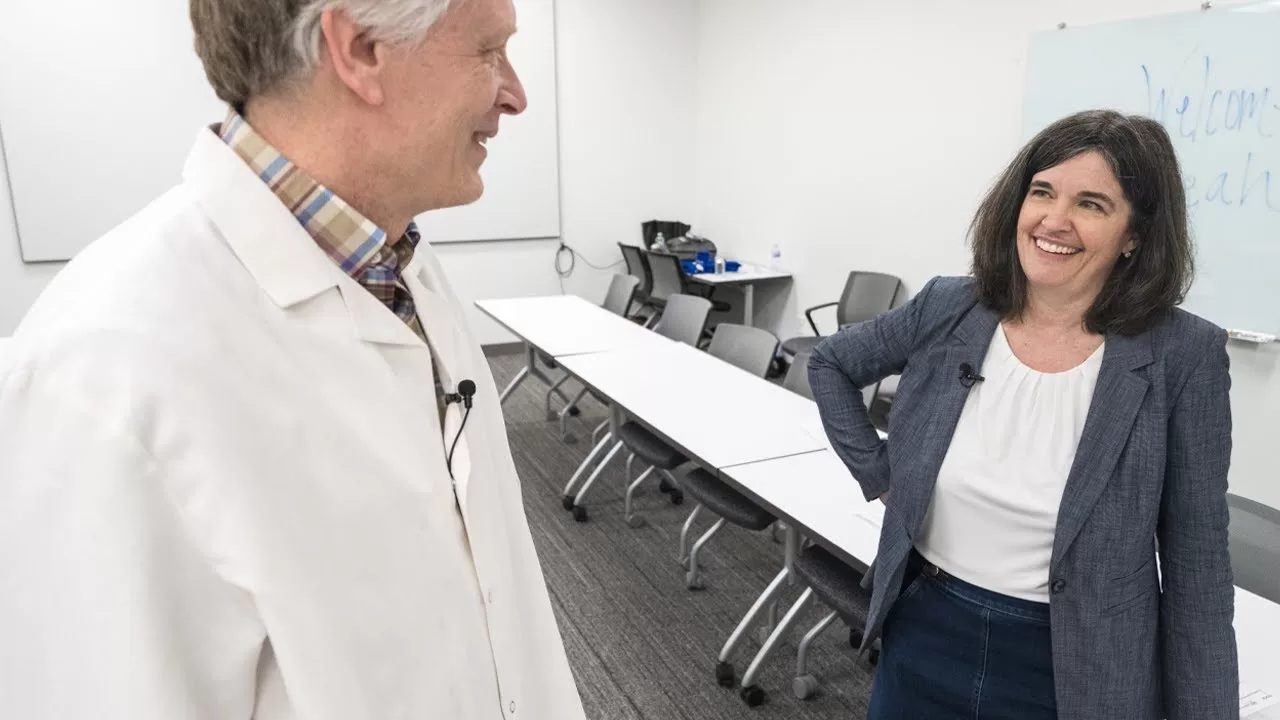Shining a Light on Silent Vascular Disease and the Importance of Timely Intervention

One Woman’s Battle Against May-Thurner Syndrome
In a world where women often put their health on the back burner while caring for their families, Leah Kondes, a mother and woman in business, and her inspiring story shed light on the importance of early detection and timely intervention for women who may suffer from a silent vascular disease – May-Thurner syndrome. This article will take you through Leah’s journey, her daughter Zoe’s role in her diagnosis, and the pressing need for awareness surrounding this underdiagnosed condition that is more prominent in women, especially those who have given birth to children.

May-Thurner Syndrome: A Hidden Threat to Women
Blood clots are a common medical condition that most people are not aware they have. However, May-Thurner syndrome is a lesser-known cause of blood clots that often go undiagnosed.
May-Thurner syndrome is a condition that obstructs blood flow when an artery in the leg compresses the nearby vein. It often goes undetected until it becomes a serious health risk, particularly for women. While the condition accounts for just 2% to 5% of deep vein thrombosis (DVT) cases – meaning a blood clot deep in the vein, often the leg – studies reveal it may actually be much more common. In fact, studies suggest it could be the cause of up to 32% of these deep vein blood clots. Despite this, it remains clinically silent in most patients.
This was the case for Leah, until she felt leg pain while walking her dog one day. Eventually, over the course of several days, her leg became so swollen she could not fit her boot over her leg.
Throughout the week, Leah’s leg pain intensified, but she dismissed it as a minor inconvenience as she juggled the demands of motherhood and a thriving career in public relations. It’s a pattern often observed among women who tend to downplay their health issues, putting the well-being of their loved ones first.
Leah’s journey began with seemingly minor symptoms, but with the encouragement of her daughter, a vascular nurse, she sought out medical attention that would ultimately save her life.
The Importance of Timely Detection and Intervention
Failure to address the underlying problems that come with May-Thurner syndrome can increase the chances of more blood clots forming again, making timely treatment critical.
Leah’s symptoms were initially deemed a result of dehydration, but things took a turn when her daughter encouraged her to get a second opinion. What followed was a whirlwind of events, including a visit to two hospitals, hours of waiting, an ultrasound, and a CT scan that would finally detect the source of the problem – a blood clot in Leah’s leg. It was only then that she received her diagnosis of May-Thurner syndrome and learned that she required treatment that same day.
“As a mother, you want to be able to go to your kid’s next soccer game, see them graduate, be there when they get married,” said Leah. “I don’t know what would have happened if I didn’t go to the ER that night and, in a perfect world, everyone would have the knowledge and access to get the life-saving treatment they need.”
Treatment for May-Thurner syndrome focuses on improving blood flow and reducing the risk of developing DVT. Typical treatment options can include:
- Angioplasty and stenting: A minimally invasive procedure to open blocked arteries using a balloon and often a stent to ensure the artery remains open.
- Bypass surgery: Surgical intervention that takes a blood vessel from one part of your body and uses it to create a new path for blood to flow around a blocked or compressed area.
- Surgery to move the right iliac artery: Surgical relocation or repair of the right iliac artery, a major blood vessel supplying the lower limbs, is often performed to address aneurysms or severe blockages.
In Leah’s case, having stents implanted in her leg was the solution (Medtronic, Abre™ venous self-expanding stent system). The procedure was simple and within days the pain and swelling that brought her to the hospital was gone.
Raising Awareness for the Overlooked Health Concerns of Women
While Leah’s symptoms were leg pain and swelling accompanied by dizziness, symptoms may differ based on the individual. In fact, many people won’t present with any symptoms at all, especially if they don’t have DVT. Symptoms primarily occur in the legs and usually the left leg specifically. In addition to the few Leah experienced, symptoms of May-Thurner syndrome that women should be aware of can include:
- Feelings of heaviness
- Open sores (ulcers)
- Pain
- Skin discoloration
- Swelling
- Varicose veins
“Prior to this experience, I had never even heard of May-Thurner syndrome,” said Leah when speaking to the need for greater awareness of the condition. “I don’t think anyone would be able to identify it, or even think to do so, unless they are a vascular nurse or specialist.”
Luckily, Leah’s journey was not one she faced alone. Her daughter’s role as a vascular nurse played a significant part in her early diagnosis and timely intervention. This highlights the importance of having a strong support network and the guidance of knowledgeable professionals when navigating complex medical conditions like May-Thurner syndrome. Leah’s story is a reminder that healthcare professionals, especially those close to the patient, can make a substantial difference in recognizing and addressing health issues swiftly.
The message of Leah’s story is clear: there remains a need to amplify awareness of women’s health —particularly women’s vascular health. Her dedication to educating others about seeking answers early to critical health concerns serves as a powerful force for change.
The urgency of prioritizing women’s vascular health cannot be overstated. Leah’s journey highlights the need for greater awareness to ensure that women’s health concerns receive the attention they deserve.
Leah Kondes’ journey from experiencing uncomfortable leg pain to early detection and advocacy for May-Thurner syndrome is a powerful testament to the importance of women’s vascular health and the significance of timely intervention. Her story serves as a reminder that health should never take a backseat and, as individuals and as a society, we must prioritize the well-being of women.
For more information, visit https://news.medtronic.com/how-a-manufacturing-tour-changed-one-patient-newsroom for resources from Medtronic and learn how you can take action by advocating for your health.










